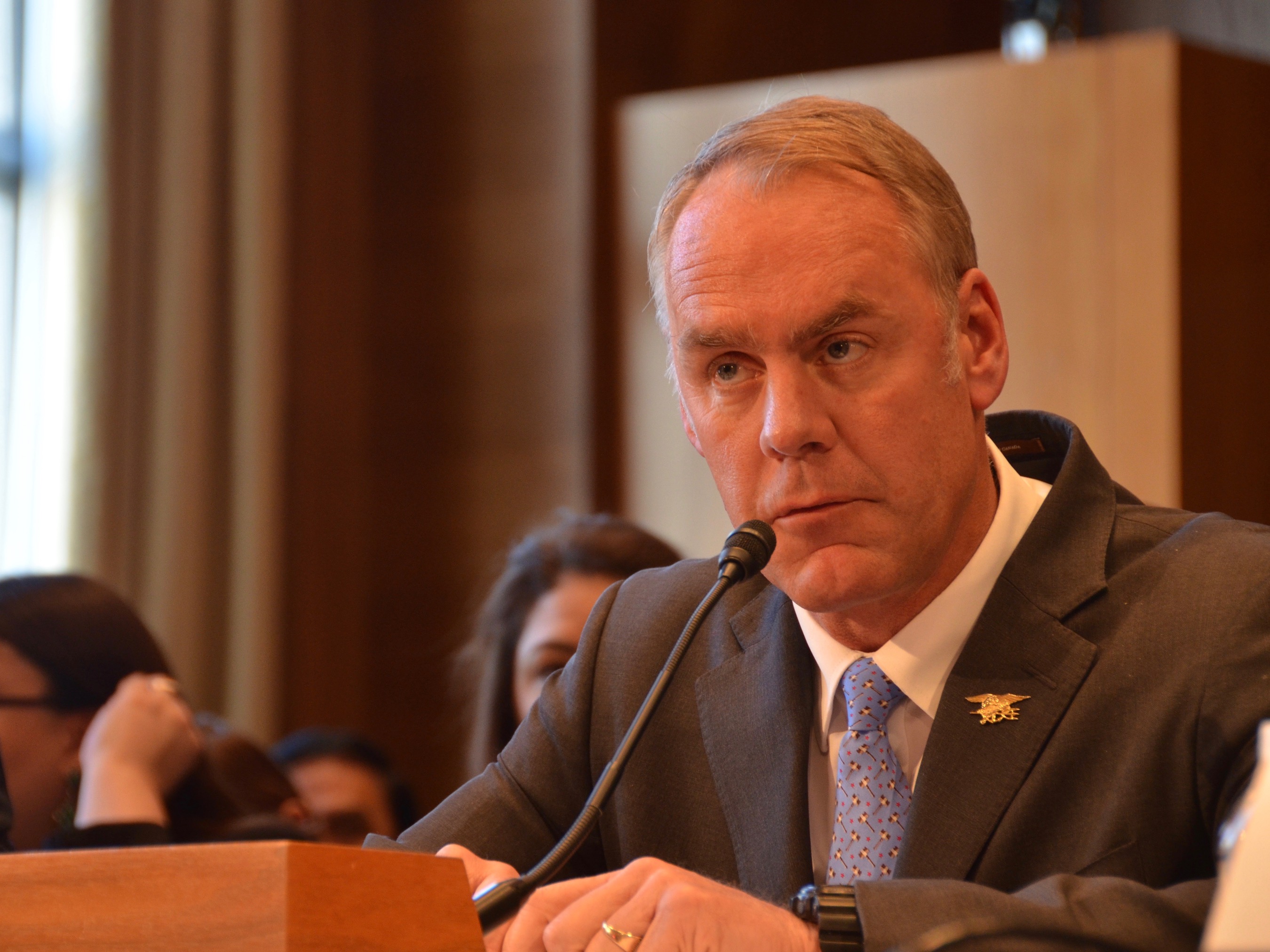
So far, Secretary Ryan Zinke, who has been adopted by Fort Peck, hasn't said much about the effort. But his team will be reaching out to tribes at a Buy-Back listening session next month. "There's three things when it comes to tribes: sovereignty, respect and self-determination," Zinke said on a conference call on Wednesday as he outlined the main pillars of his Indian policy. Key lawmakers haven't said much about program either. But they have been repeatedly told by tribes that fractionation, which occurs when Indian allotments become divided among dozens or even hundreds of owners, hinders economic development in their communities. The Crow Nation, also based in Montana, was one of the first participants in the program. More than $130 million was paid to over 2,500 landowners and the equivalent of more than 240,000 acres went back into tribal hands, according to the tribe and Interior. But as Zinke made his first appearance on Capitol Hill earlier this month, Chairman Alvin Not Afraid, Jr. said the tribe still finds it difficult to lure development to the reservation. The federal government's allotment policy, which is the underlying cause of fractionation, has led to multiple and confusing layers of ownership and jurisdiction, he told the Senate Committee on Indian Affairs.

"As a sovereign nation, the Crow Nation has a right to regulate our land and our resources," Not Afraid said with Zinke by his side at the witness table As of March 24, the Cobell program has paid out $1,152,641,009 to landowners on more than 30 reservations across the U.S. Offers are still being processed at four additional reservations, according to the department. That leaves the program with less than $800 million to reach another 70 or so reservations with high levels of fractionation. Interior plans to extend offers through 2021, or nine years after the first offers went out, but the money could run out as early as 2019 if the acceptance rate continues at the current pace. But even if the department sticks to the implementation schedule, fractionation will continue to remain a problem in Indian Country without further investments. 'The program estimates that more than 4 million equivalent purchasable fractionated acres may still exist after it fully expends the consolidation fund," the department said in a status report issued in November. The Land Buy-Back Program for Tribal Nations was created by the $3.4 billion settlement to the Cobell trust fund lawsuit. The law that implemented the settlement called for the money to be spent over a 10-year period. Since the first offers didn't go out until late 2012, about two years after Congress ratified the settlement, lawmakers were initially worried that the Interior was moving too slow. But the program hit a key milestone -- $1 billion in accepted offers -- in just four years. Next month's listening session takes place April 25. It will be hosted by the Tulalip Tribes at the Tulalip Resort Casino in Washington. Interior Department Report:
2016 Status Report: Land Buy-Back Program for Tribal Nations (November 2016)
Join the Conversation
Related Stories
Cheyenne
and Arapaho Tribal Tribune: Tribe joins Cobell buy-back efforts (02/13)Cobell scholarship fund grows to $47M thanks to buy-back effort (01/11)
Interior Department touts tribal homeland efforts as Obama era comes to an end (01/05)
Leaders on Navajo Nation call Cobell land buy-back effort a success (01/04)
Three more tribes sign cooperative agreements for Cobell program (12/15)
Landowners on Colville Reservation see $25M in Buy-Back offers (12/12)
Senate committee ready for hearing on Cobell buy-back program (12/05)
Senate committee schedules hearing on Cobell buy-back program (11/22)
Bureau of Indian Affairs transfers $14M in land proceeds to tribes (11/18)
Landowners on Crow Creek Sioux Reservation see $40M in Cobell buy-back offers (11/09)
Interior Department highlights achievements of Cobell buy-back program (11/01)

